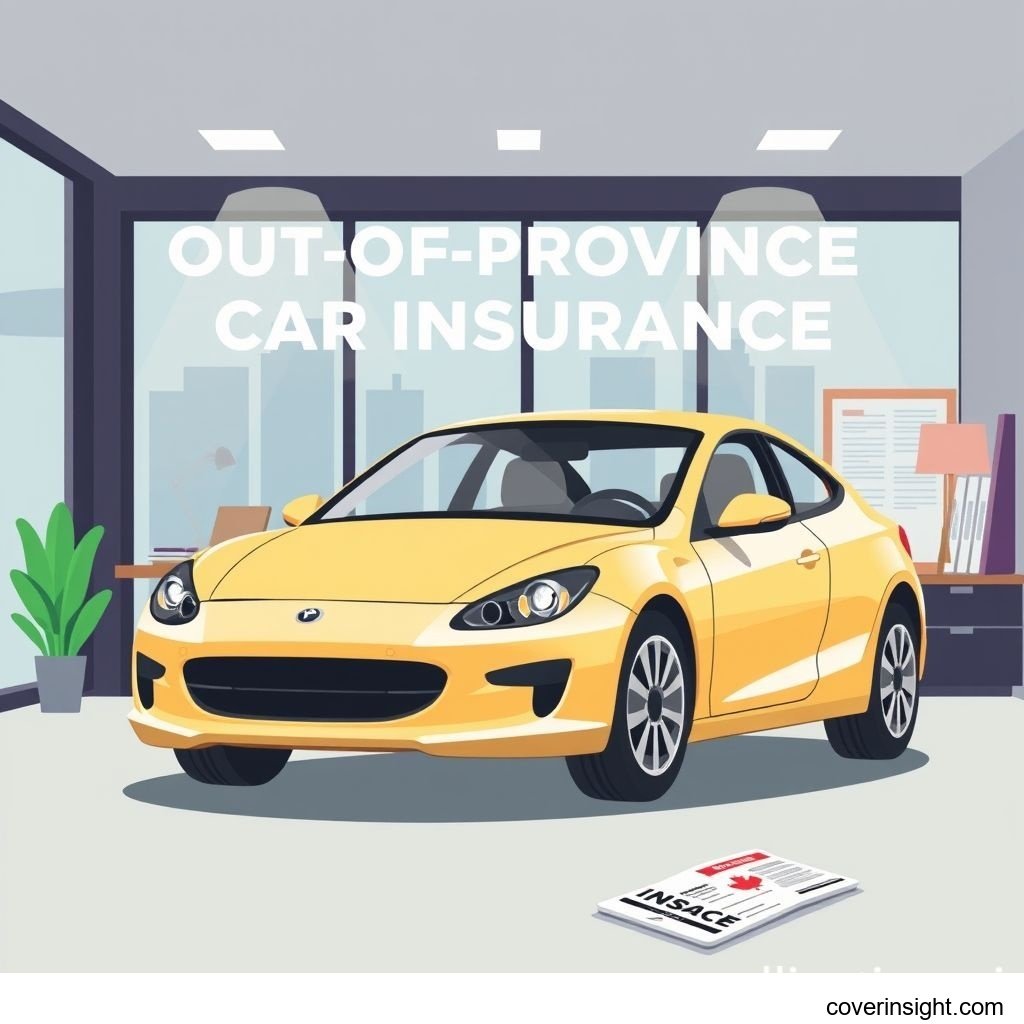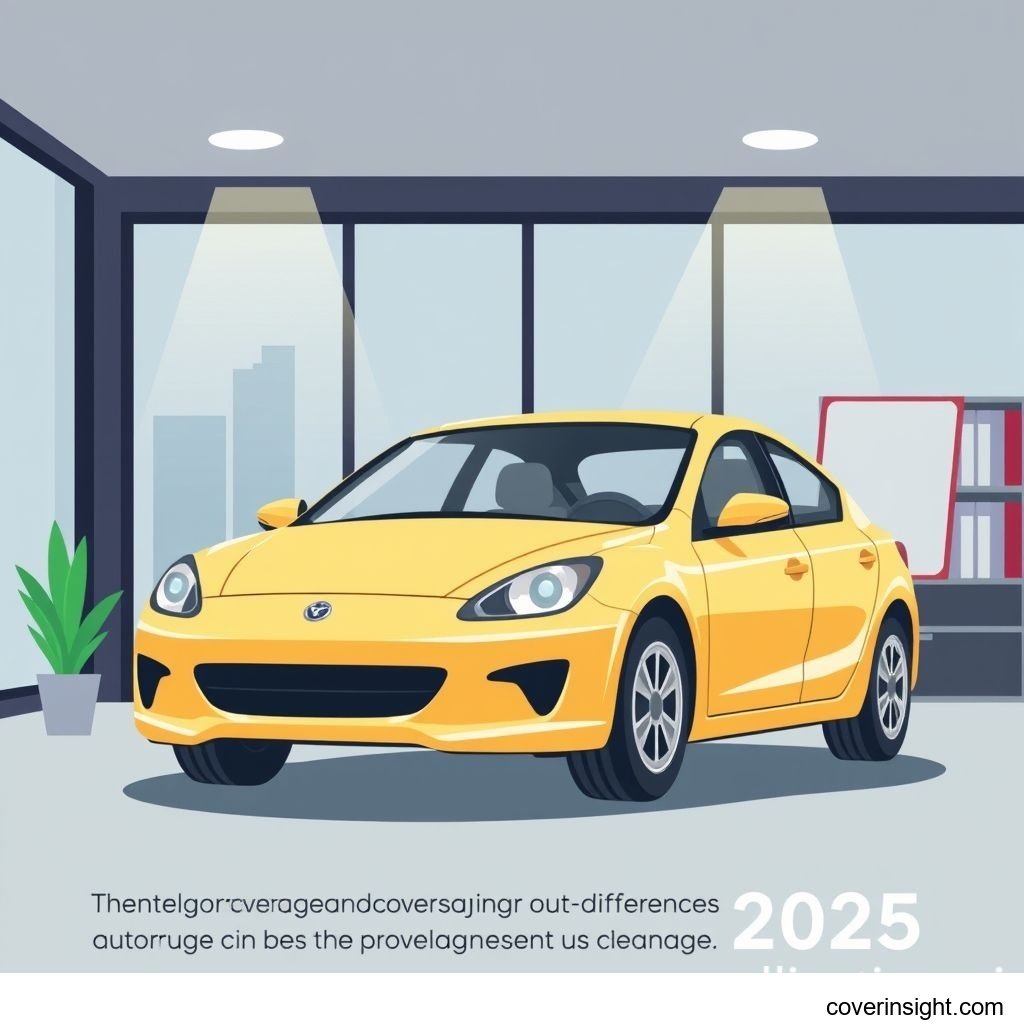Introduction
Venturing beyond your home province in Canada for a road trip, a move, or even just a quick getaway often brings the excitement of new landscapes and experiences. But amidst the planning, have you stopped to consider your car insurance? As we look towards 2025, understanding your out-of-province coverage is not just a good idea – it's crucial. Your standard provincial car insurance policy typically provides coverage across Canada and the U.S., but the nuances can be a bit tricky. Being prepared means knowing what your policy covers when you're far from home, ensuring you're protected should the unexpected happen on those long stretches of highway or in bustling city centres you're less familiar with.
Coverage Details
Navigating the specifics of out-of-province car insurance means understanding both what's included by default and what might be left out.
What’s Included
Generally, your existing car insurance policy, issued by your home province, extends to cover you throughout Canada and the United States. This is a common feature designed to provide peace of mind for drivers. What's typically included mirrors the core components of your domestic policy:
-
Third-Party Liability: This is the big one. If you're at fault in an accident, your policy covers the costs of damages to other vehicles or property, and any injuries to other people. It's important to note that while every Canadian province mandates a minimum of $200,000 in third-party liability coverage, as highlighted by the Insurance Bureau of Canada (IBC), most savvy drivers opt for $1 million or more. This higher limit is crucial, as accident costs can quickly skyrocket, especially in other provinces with different medical or property damage claim structures.
-
Accident Benefits: If you or your passengers are injured in an accident, regardless of who's at fault, this coverage helps pay for medical treatment, rehabilitation, and, in some cases, lost wages. These benefits can vary slightly from province to province, but your home province's benefits usually apply.
-
Direct Compensation – Property Damage (DCPD): In some provinces (like Ontario, Quebec, Nova Scotia, New Brunswick, and PEI), if another insured driver is at fault for damaging your vehicle, your own insurer pays for the repairs directly, simplifying the claims process. This system usually travels with you.
-
Collision and Comprehensive Coverage: If you've opted for these, they typically apply across Canada and the U.S. Collision covers damage to your own vehicle if you hit another car or object, or if you roll over. Comprehensive covers non-collision events like theft, vandalism, fire, or damage from natural disasters.
For a deeper dive into general insurance concepts, you might find more helpful information at Insurance Resources Global.
Common Exclusions
While your policy generally covers you across borders, it's not a blanket solution for every scenario. Here are some common exclusions:
-
Intentional Damage: Causing damage deliberately to your vehicle or someone else's is never covered.
-
Commercial Use: If you use your personal vehicle for commercial purposes (e.g., ride-sharing, delivery services) without specifically informing your insurer and getting appropriate endorsements, any claims arising from such use will likely be denied. This is a big one that catches many off guard.
-
Racing or Stunt Driving: Participating in races or engaging in reckless stunt driving activities will void your coverage in case of an accident.
-
Unlisted Drivers: If someone not listed on your policy or otherwise covered by a "permissive use" clause (e.g., a family member with your permission) drives your car and gets into an accident, your claim might be impacted or denied.
-
Driving Under the Influence: Accidents that occur while you're impaired by alcohol or drugs are typically not covered, and could lead to severe legal consequences and policy cancellation.
-
Modifications: Significant modifications to your vehicle that aren't reported to your insurer can also lead to issues with claims.
Consider a family from Quebec, the Tremblays, who were on a scenic tour through British Columbia in 2024. While navigating a tight parking lot in Victoria, Mr. Tremblay had a minor fender-bender with another vehicle. Thanks to their Quebec-issued policy, which extends nationwide, their insurer handled the property damage and minor injuries under their Third-Party Liability and Accident Benefits coverage, even though the incident occurred thousands of kilometres from home. This highlights how your existing policy truly has your back, provided you're adhering to its terms.
Cost Analysis
While your basic out-of-province coverage is usually built into your standard policy, understanding what can influence costs and how to save money is always beneficial.
Price Factors
When you're travelling, your actual premium doesn't generally increase for the act of driving out-of-province, as long as it's not a permanent move. However, your overall premium for your annual policy is influenced by factors that determine your risk, which apply regardless of where you're driving within the covered territories:
-
Your Driving Record: Clean driving records are golden. Accidents, tickets, and demerit points significantly push up premiums.
-
Type of Vehicle: The make, model, year, and even colour of your car can influence rates. More expensive, high-performance, or frequently stolen vehicles typically cost more to insure.
-
Location: While not a factor for out-of-province travel itself, your permanent residence in Canada plays a huge role due to local claim rates, traffic density, and theft statistics.
-
Coverage Limits and Deductibles: Choosing higher liability limits (which is wise for travel) or lower deductibles will increase your premium.
-
Frequency and Duration of Out-of-Province Travel: If your insurer sees a pattern of prolonged stays in other provinces (e.g., a "snowbird" heading south for months), they might adjust your risk profile or require specific endorsements.
-
Additional Endorsements: Adding features like rental car coverage or enhanced accident benefits can add to your cost but provide greater peace of mind.
Saving Tips
Keeping your insurance costs manageable is always a priority. Here are some ways to potentially save:
-
Maintain a Stellar Driving Record: This is your best friend when it comes to insurance premiums. Drive safely, avoid tickets, and stay accident-free.
-
Shop Around: Don't just renew with the same provider out of habit. Get quotes from multiple insurers. You'd be surprised at the difference. You can start by checking out general information on your home province's insurance at CA Insurance Home.
-
Bundle Policies: Many insurers offer discounts if you bundle your car insurance with home insurance or other policies.
-
Increase Your Deductible: If you have an emergency fund, consider raising your deductible. This means you pay more out-of-pocket if you make a claim, but your monthly or annual premium will be lower.
-
Ask About Discounts: Always ask your insurer about available discounts. These can include discounts for good students, low mileage, winter tires, security features, or being a loyal customer.
-
Review Your Coverage Annually: Your needs change. Don't pay for coverage you no longer need.
-
Consider Telematics Programs: Some insurers offer programs where a device monitors your driving habits. Safe drivers can earn discounts.
FAQs
How much does out-of-province coverage cost? Generally, there isn't a separate "out-of-province" fee. Your standard Canadian car insurance policy automatically includes coverage across Canada and the United States. The cost is embedded in your regular premium, which is determined by your vehicle, driving record, location, and chosen coverage limits.
What affects premiums? Key factors affecting your overall car insurance premiums include your driving history, the type of vehicle you drive, where you reside, your age, the coverage limits you select, and your chosen deductible amount.
Is it mandatory? Yes, having car insurance is mandatory in every Canadian province and territory. While "out-of-province" coverage isn't a separate requirement, your base policy must provide the minimum required liability coverage, which typically extends across Canada and the U.S. This is a non-negotiable part of being a licensed driver. For more consumer protection insights, check out the Financial Consumer Agency website.
How to choose? When selecting a policy, prioritize adequate third-party liability coverage (most experts recommend $1 million or more), especially when travelling out of province. Beyond that, consider collision and comprehensive coverage for your own vehicle, and assess if additional endorsements like rental car coverage or roadside assistance would benefit your travel habits. Always compare quotes from several providers.
Consequences of no coverage? Driving without valid car insurance in Canada is a serious offense. Consequences include hefty fines (which can be thousands of dollars), vehicle impoundment, suspension of your driver's license, and even jail time in some provinces. More critically, if you're involved in an accident without insurance, you'll be personally liable for all damages and injuries, which can amount to hundreds of thousands or even millions of dollars, potentially leading to financial ruin. It's simply not worth the risk.
Author Insight & Experience
As someone living in Canada who's driven from the Pacific coast to the Atlantic, I've seen firsthand how unpredictable our roads can be, whether it's a deer popping out of nowhere in Alberta or an unexpected downpour in the Maritimes. Based on my experience, the biggest piece of advice I can offer is: never assume. Always call your insurance provider before a major trip out of province, especially if you're planning a longer stay or driving a vehicle you don't typically use. A quick five-minute call can clarify your coverage and potentially save you a world of hurt down the road. It’s like they say, better safe than sorry, eh? And when you're out there, just keep your stick on the ice.








Comments